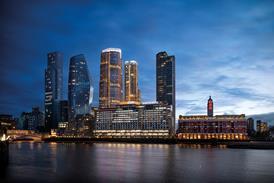The fire strategy in theatres needs careful consideration. EMC finds out that it’s not all smoke and mirrors
We’ve all heard the ear-splitting ‘boom!’ of the black-powder pyrotechnics fired to simulate the cannon roar of Tchaikovsky’s 1812 Overture or to provide the special effects at a rock concert. And we’ve jumped out of our seats with the ‘flash-bang!’ that heralds the entrance of the Demon King at our local pantomime.
But how many of us have considered the headaches the smoke clouds and explosions create for the theatre fire risk management team in their commitment to maintaining systems untroubled by false alarms?
So when the Northcott Theatre, on the Exeter University campus, undertook a major refurbishment recently, they considered these potential problems a top priority and took their concerns to fire system experts to generate long-term strategic solutions.
As Pete Goodwin, technical director at the Northcott, says: “Theatres are notoriously difficult in respect of detection of unwanted fires or smoke because a lot of productions now regularly use haze machines, smoke generators and occasionally live fire on stage. The fire alarm system had to have some unique features designed into it to avoid not only detection of these special effects but also the unnecessary evacuation of audiences.”
“The air sampling did cause us some initial concerns,” says Peter Newman of Alarmtec, the designers and installers of the completed system, commenting on the problems of unwanted false interpretations of fire events arising from pyrotechnic and smoke effects on stage.
“To avoid this problem, the system has a key-operated disablement time control unit, indicating fire conditions identified within a theatrical programme, with an in-built provision to prevent accidentally switching off disablements during the controlled period.”
At the heart of the Northcott’s new fire alarm and voice evacuation system is the fire detection control panel from Kentec, strategically sited to enable early indication of fire event information. A Kentec four-loop syncro panel with a 10 A power supply unit was specified, and this interface is supported by 72-hour standby, together with two display-only repeater panels.
“The design requires that during shows the fire alarm system is switched to ‘double knock’ mode,” explains Kentec’s technical director, Robert Jefferys. “Cross-zone detection ensures cross-checking between different detectors, in different zones, with all cross-referencing detectors having to be triggered in the event of a fire condition. The system sounds a discreet alarm and flashes discreet strobe indicators that the audience cannot see or hear.”
This gives the house manager a preset search and investigation period to discover the cause of the alarm and then to silence the system or send it to full alert prior to the evacuation of the building.
The timer also has indicators from the frontline Vesda (Very Early Smoke Detection Apparatus) air-sampling detectors, to show whether they are in an alarm condition. Visual indicators are specified at strategic locations in the building, which illuminate during a ‘first knock’ condition.
Special effects override
“The system is specified with an integral override timer,” explains Steve Bonser of Hoare Lea, the m&e consultant appointed by the Northcott to engineer the project and commission it.
“This allowed the theatre’s technical staff to inhibit its operation during the use of special effects. After the preset time period has elapsed, the system automatically returns to normal operation. Should special-effects particulates still be air-borne after nearing the end of the preset period, the timer can be re-initiated.”
The system sounds a discreet alarm and flashes discreet strobe indicators that the audience cannot see or hear. This gives the house manager a preset search and investigation period to discover the cause of the alarm
Due to the high ceilings in the atrium and stage fly tower areas, careful consideration was given when selecting the type of automatic detection. Point heat detection would not have operated correctly (or complied with the relevant British Standard) at the required mounting heights. Also it would not have allowed ready, safe access for future maintenance. Instead, an aspirating smoke detection (ASD) system is used to overcome the maintenance issue and provide improved detection response times.
Emergency announcements
The voice alarm/public address system is custom-built to incorporate the theatre’s fire risk strategies. Two zonal fireman’s microphones with message control are installed at the public entrances to allow the fire services to make live announcements in the event of an emergency.
A zonal paging microphone is also installed in the front-of-house manager’s office. The voice evacuation (VE) system accepts calls from the stage ‘prompt desk’, which enables the theatre management to use the VE loudspeakers in the front-of-house areas to send paging calls to the audience in the bar. The theatre sound engineers can access the system from their patch bay and provide zonal background music as required anywhere in the building.
“To achieve a balance between minimising false alarms and providing quick response times to the detection of fire, the system was designed with two modes of operation, public and private,” says Steve Bonser.
Public mode is used during performances, when the system is operated in ‘double knock’ configuration.
Private mode is used during non-public times when building occupancy is reduced. The system operates in ‘single knock’ mode, which aims to provide faster response to fire.
Similarly, the VE system is designed with public and private operating modes. In public mode the public address system paging does not operate in the auditorium and areas opening directly onto it to prevent any unintentional broadcast disturbing the performance.
The theatre is also fitted with a disabled refuge voice communication system which is interfaced with the fire alarm system to prevent operation of that system unless there is a fire, and to prevent it from being misused.
As part of these works, the local authority’s building control and fire officers required the whole building to be provided with an automatic fire alarm system to category L1 of BS 5839:2001, to protect both life and property.
Commissioning and witnessing of the completed installation was overseen by Hoare Lea and demonstrated to the local fire officer.
The system specification for this project changed a number of times, but the specifiers particularly noted that, because the equipment used is highly flexible, it was possible to make any changes rapidly and straightforwardly.
This article was originally published in EMC March 09 as Playing with fire
Source
Electrical and Mechanical Contractor






















No comments yet